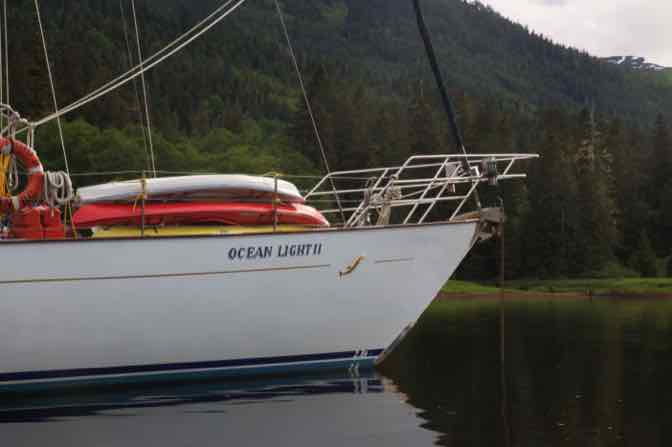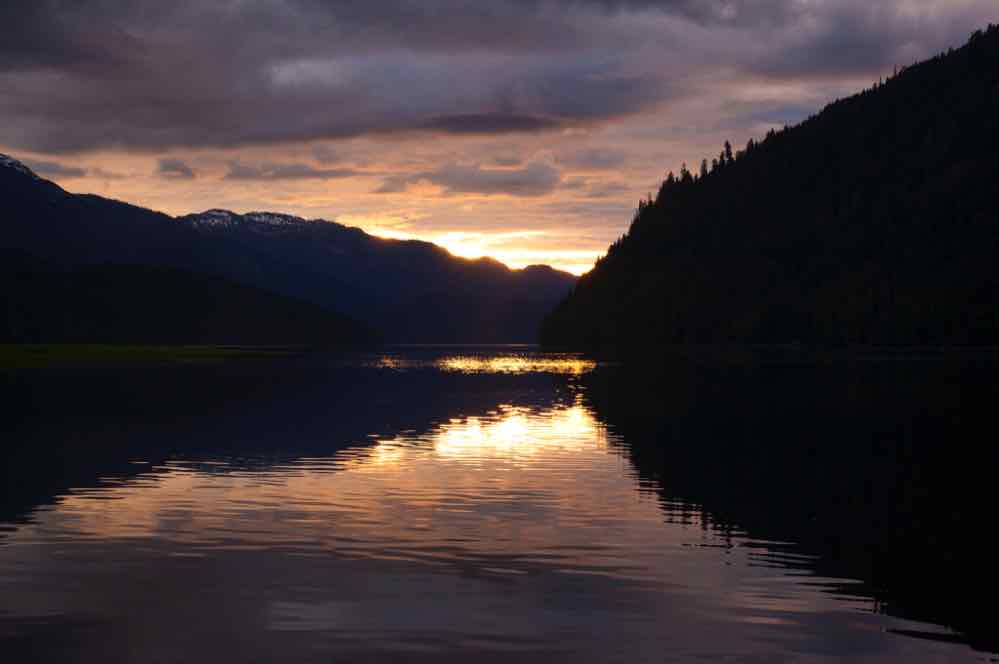
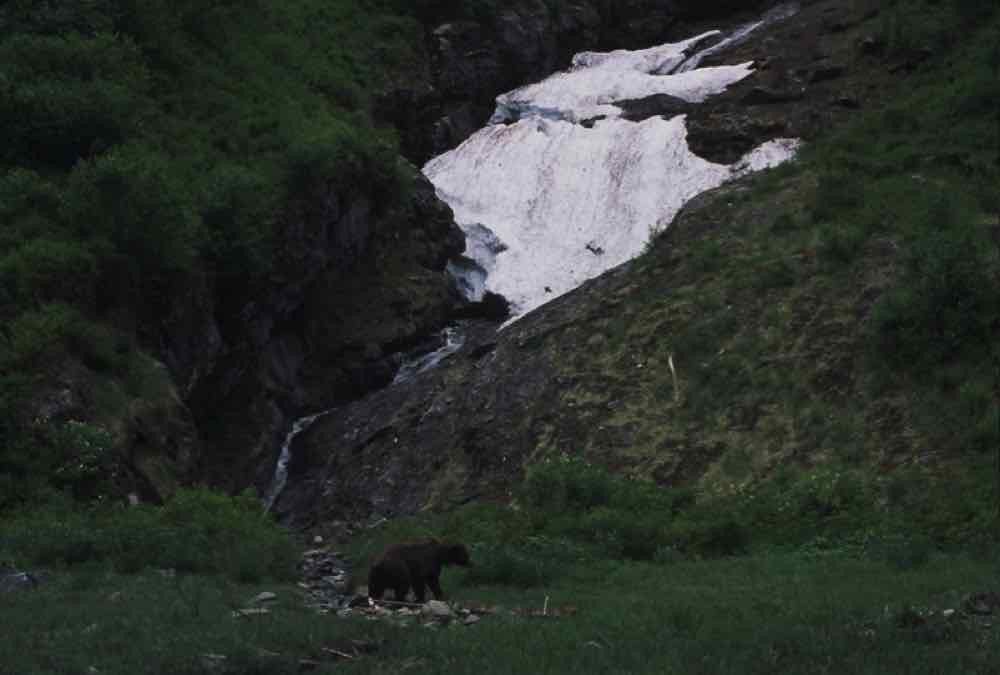

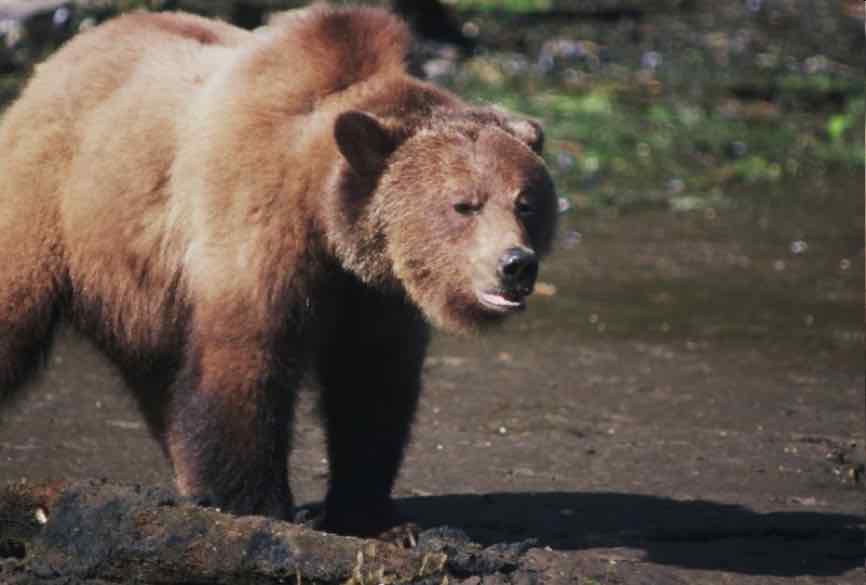
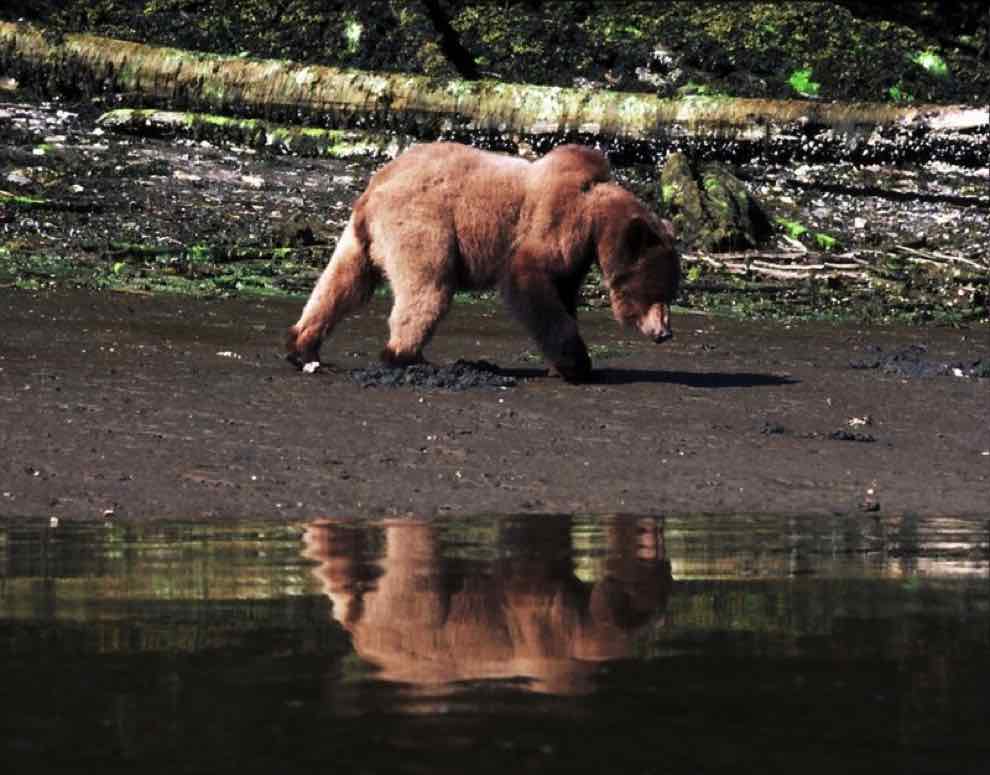
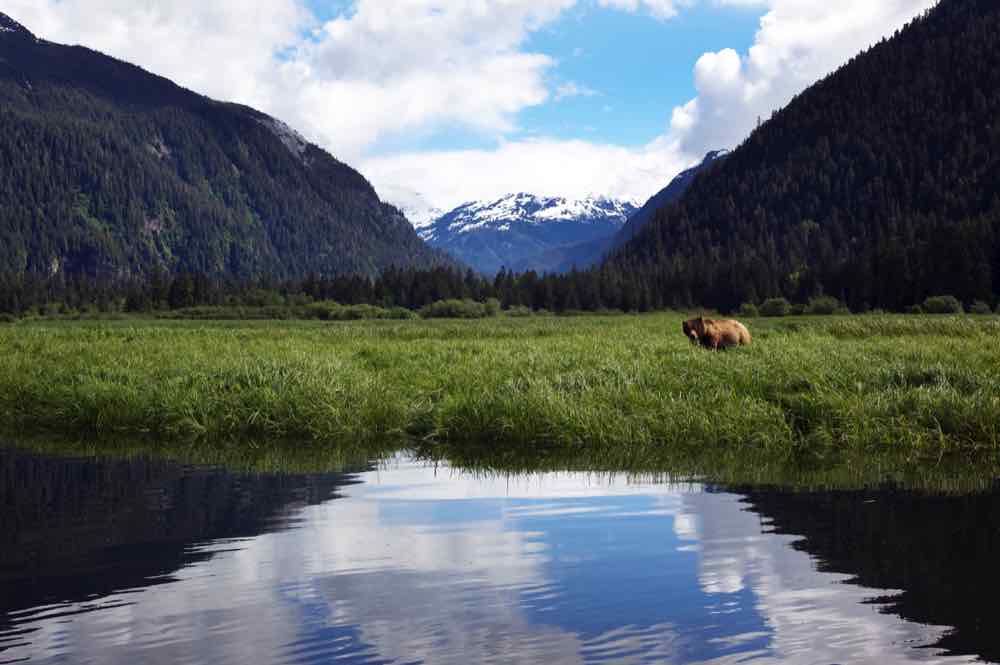
The Khutzeymateen Grizzly Bear Sanctuary
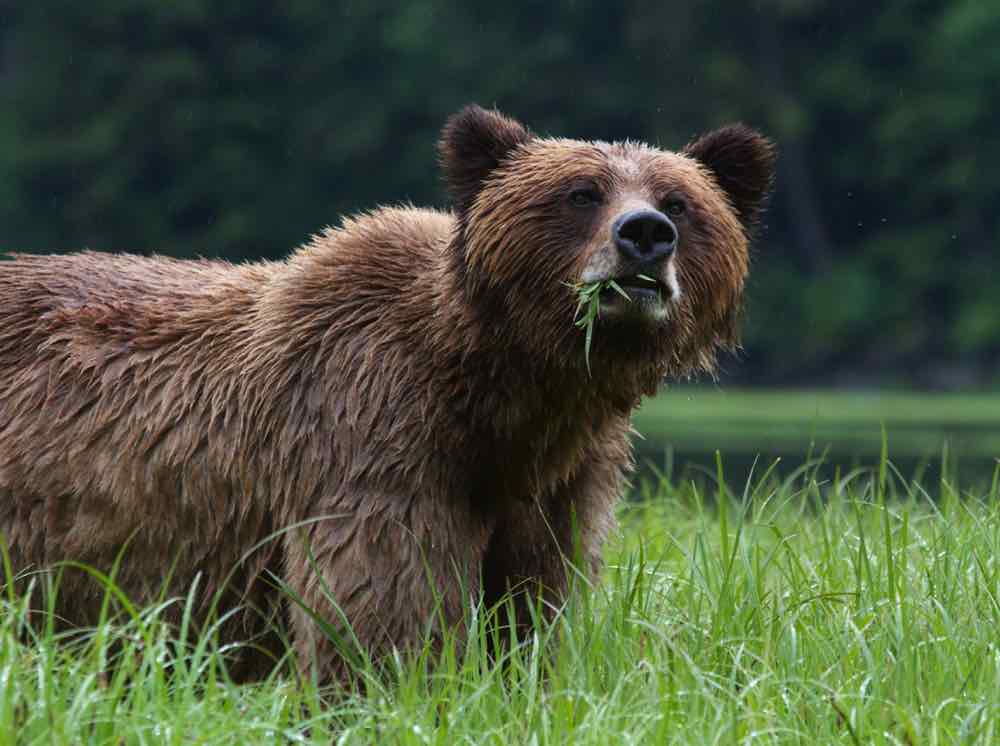
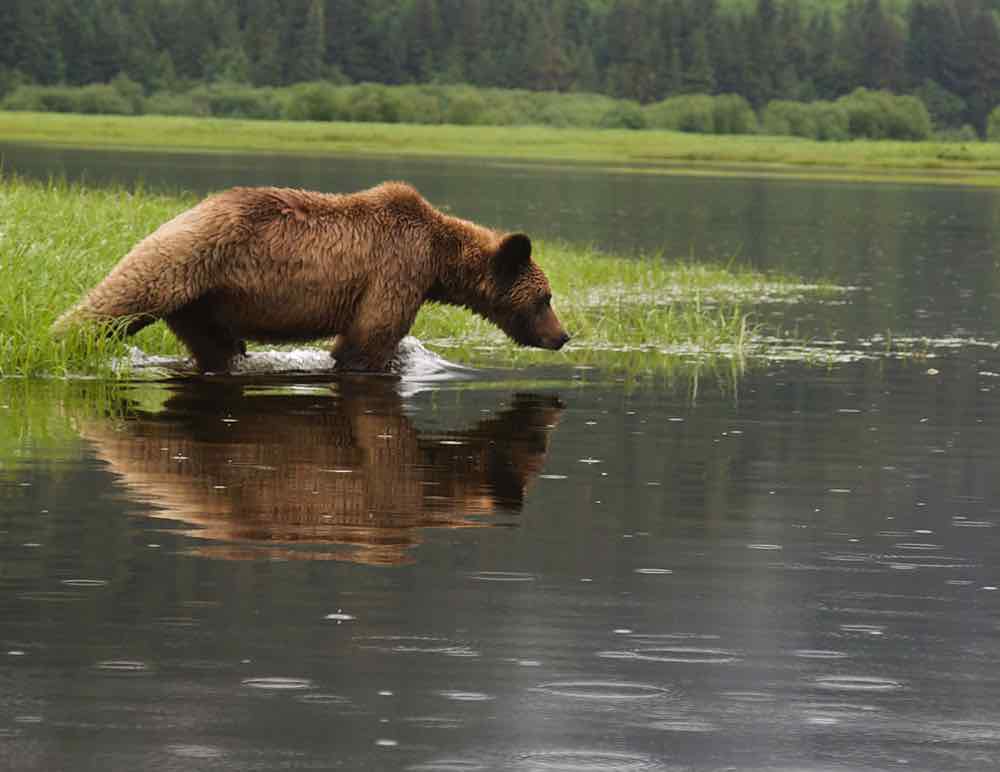
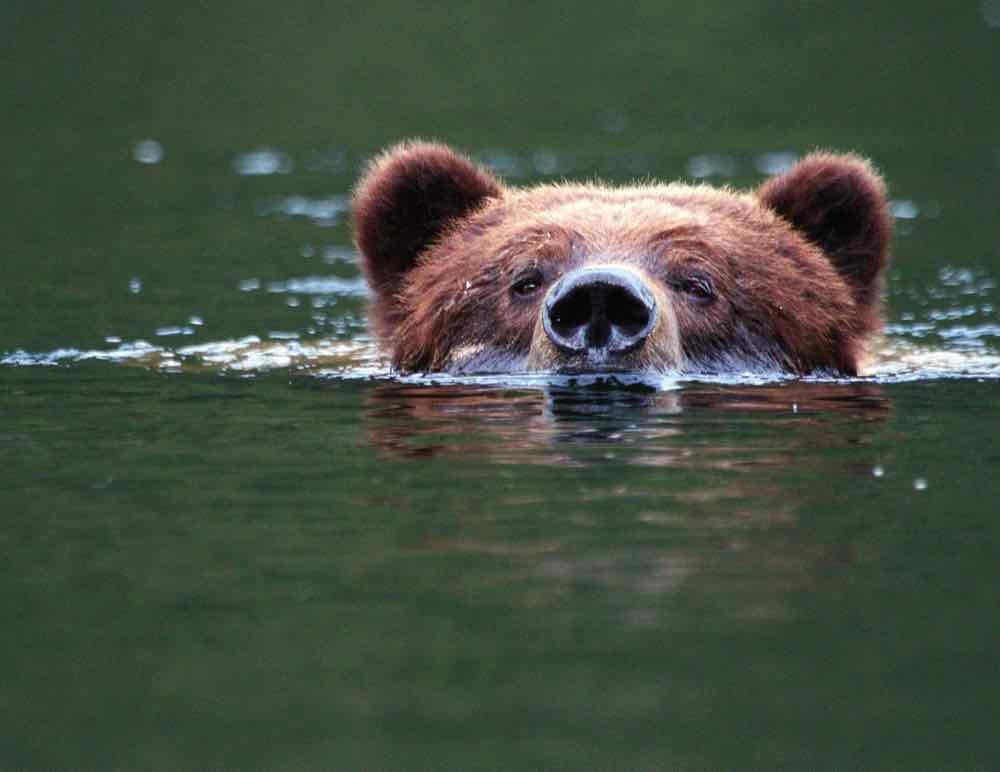
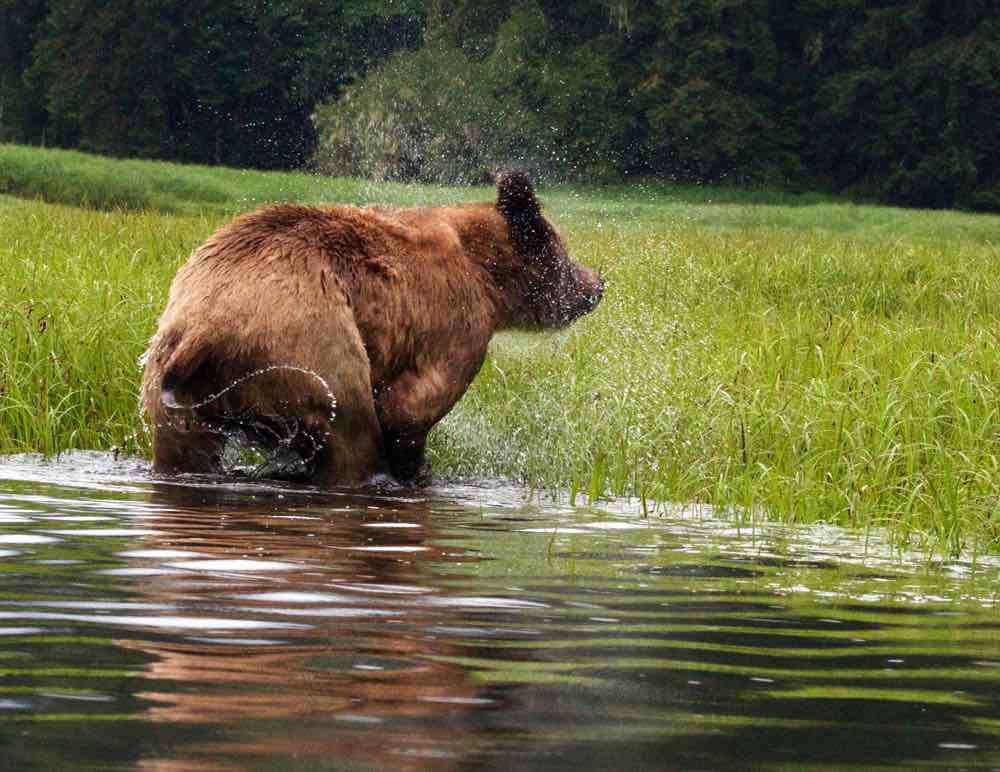
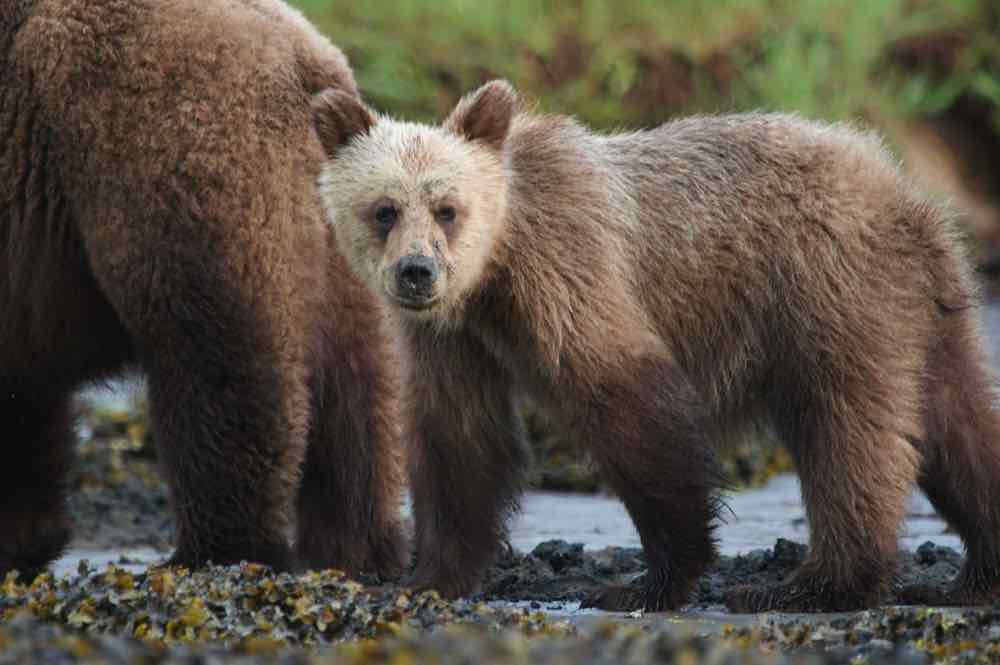
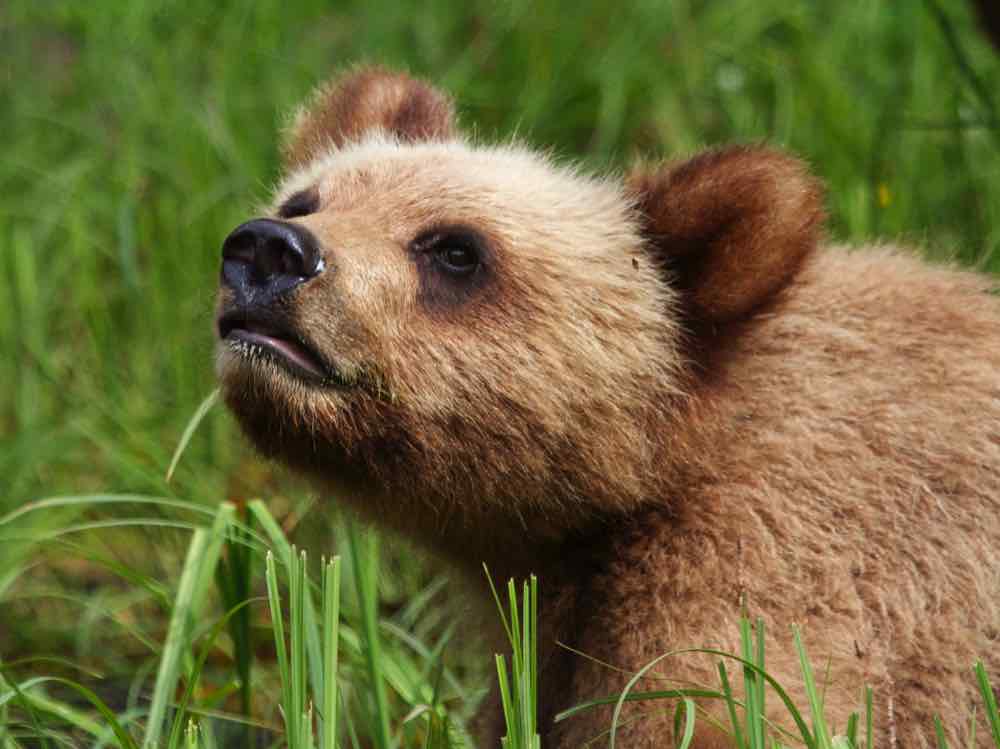
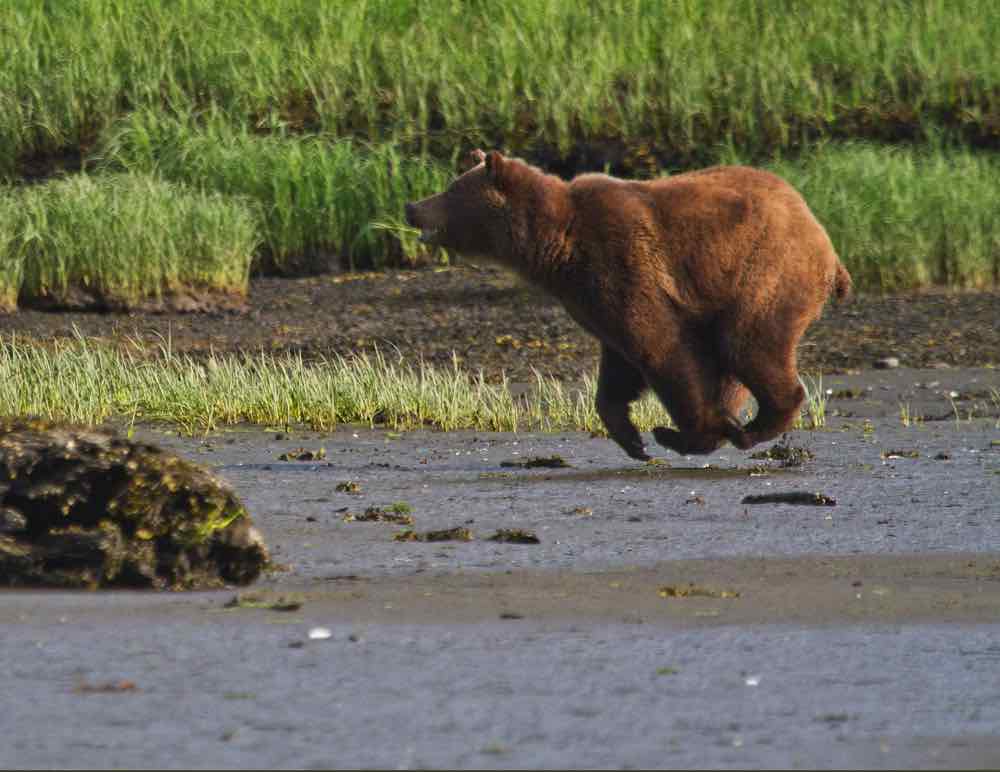
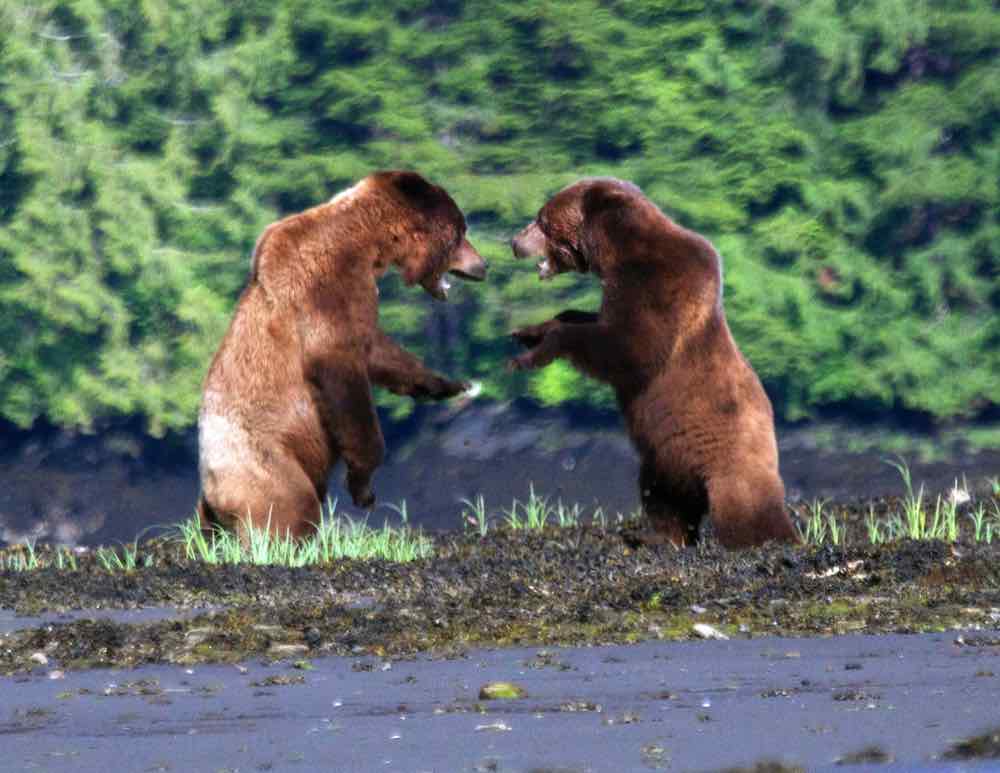
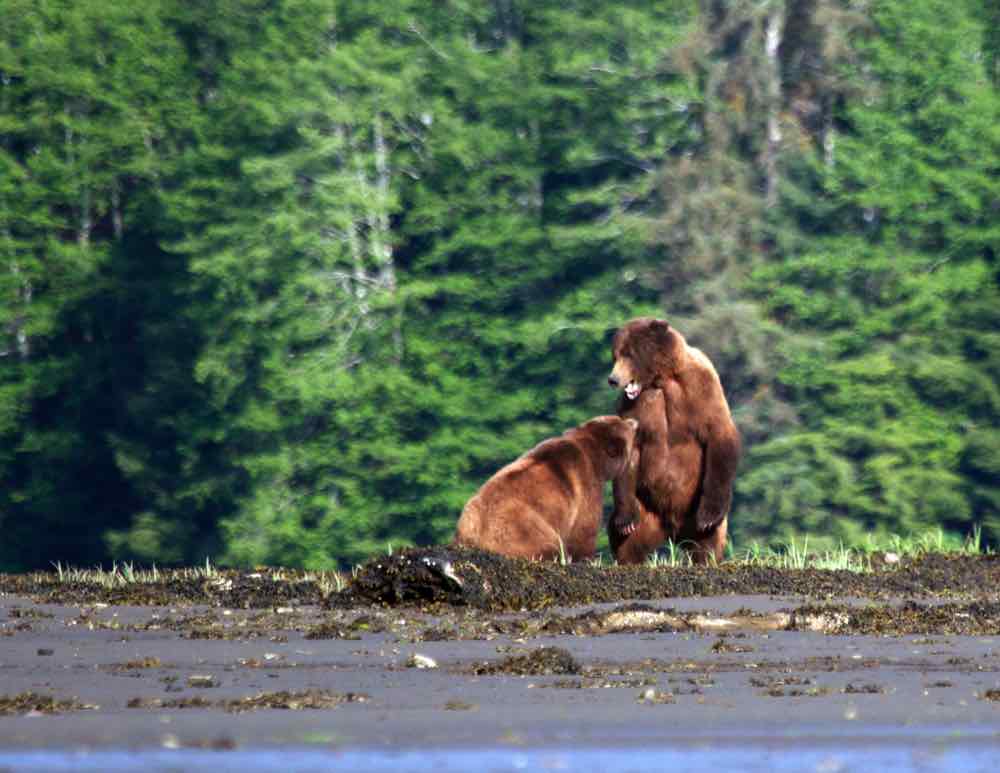
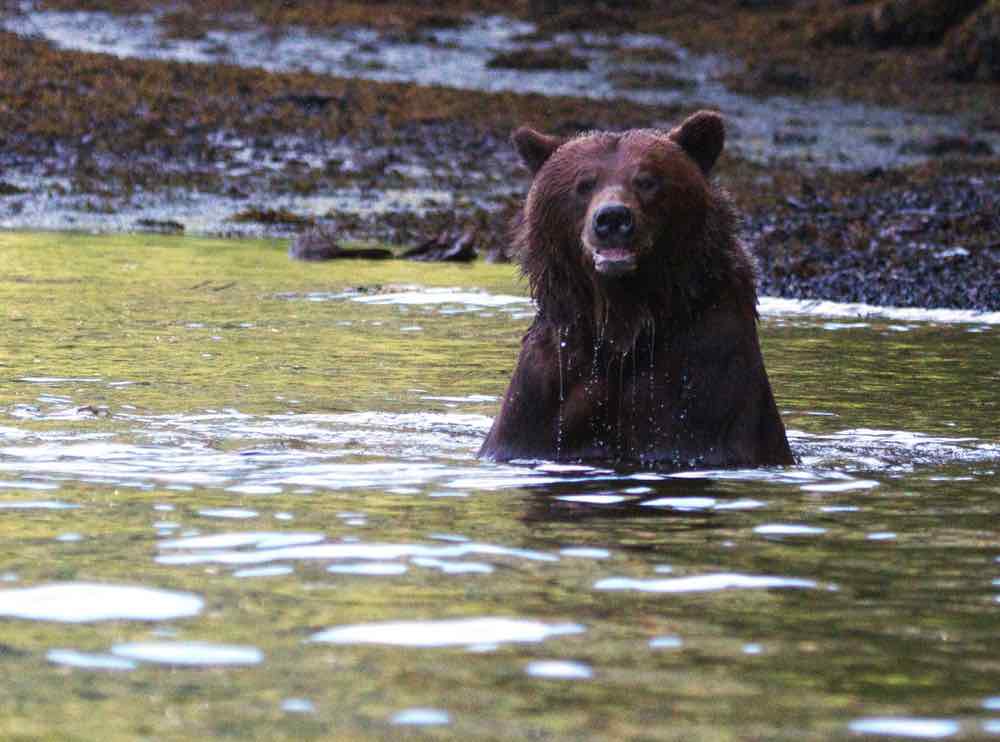
Please, All images are copyrighted by Jim Edwards and may not be reproduced in any form including the copying or saving of digital files without written permission or a contract from
Jim Edwards Wildlife Photography.
Contact e-mail: edwards617@aol.com
As many as 100,000 grizzly bears once roamed the lower 48 states.
Today, an estimated 800 to 1200 grizzlies exist in the American Northern Rockies
Located in the coastal rainforest of Northwest British Columbia, the area was established in 1994 as North America's first officially designated grizzly sanctuary.
The 100,000 acre wilderness sanctuary is home to one of the highest concentrations of grizzly bears in North America.
The sanctuary is located 25 miles northeast of Prince Rupert Island, on British Columbia's northern coast, near the Alaskan Border.
Peaks rise to over 6500 feet above sea level along the Khutzeymateen River. Only two guides are licensed by the Canadian government to take small groups up the Khutzeymateen River into the Sanctuary, which extends for about 14 miles. Fewer than 200 people are allowed into the area annually.
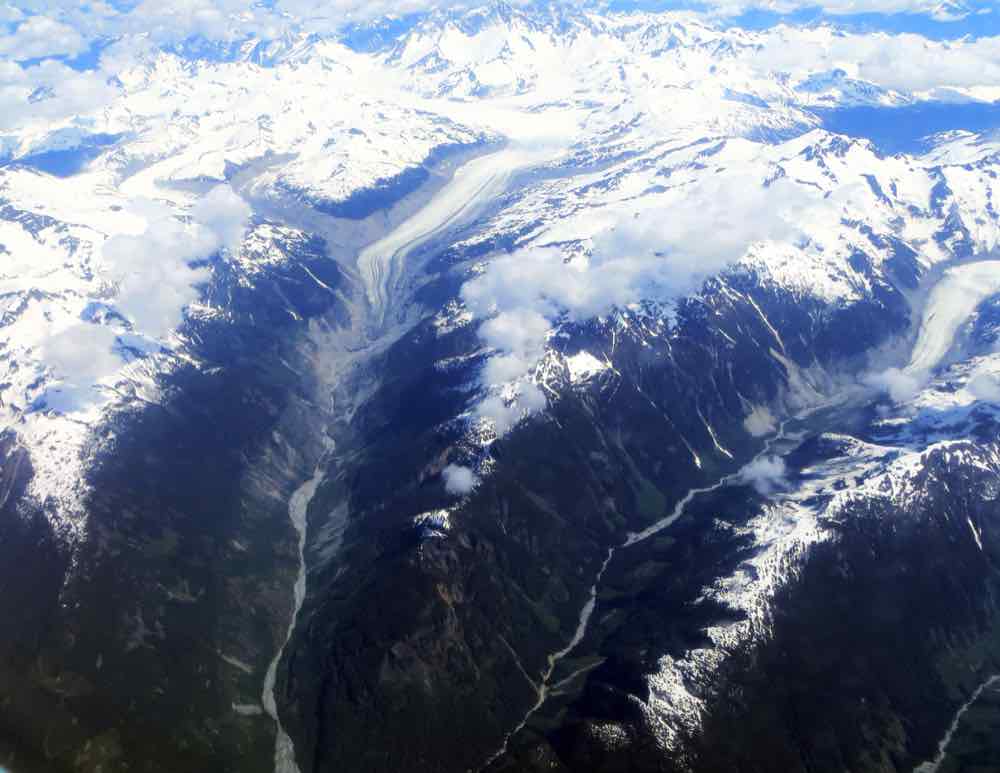
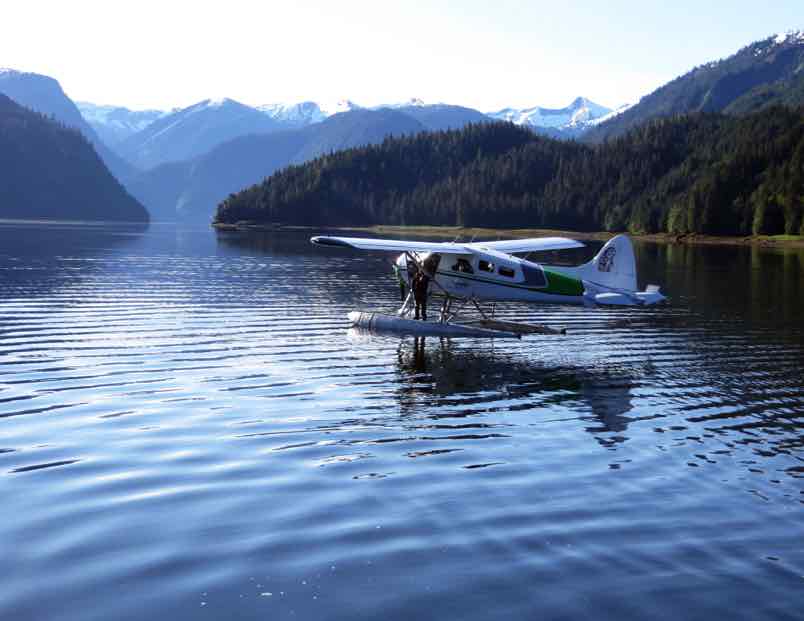
We arrive in the Sancturary by float plane. Our home for 4 days is the sailboat, Ocean Light ll
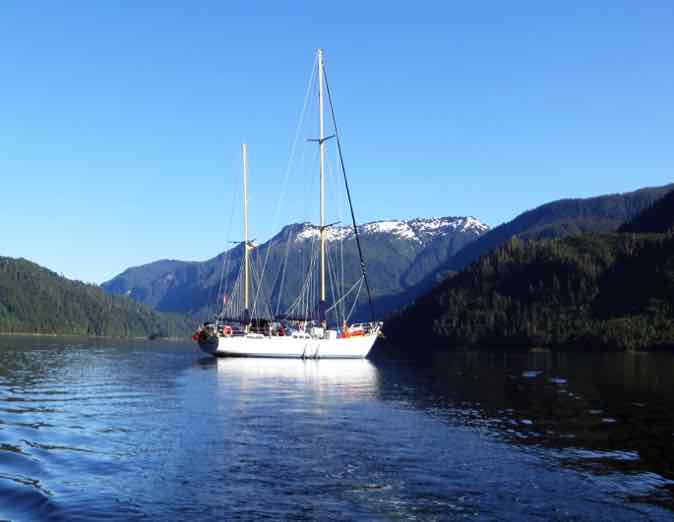
This wilderness area is home to at least 60 grizzlies. The grizzlies share the watershed with black bears, wolves, wolverines, mountain goats, mink, otters, martens, porcupines and beavers. Marine mammals such as seals, otters, and whales frequent the area and over 100 species of birds are also found in the valley.
The Grizzly Bear
Ursus arctos horribilis
Also known as the Brown Bear, the grizzly has a distinctive hump that black bears lack.This hump over the shoulders is a muscle mass that enables the brown bears to dig and use their paws as a striking force.
The common name grizzly is derived from the term grizzled, which refers to hair that is either flecked with gray at the ends or is a mixture of gray and darker colors.
Coming out of their winter dens the bears main diet is the nutrient rich sedge grass. During May, June and early July, a bear will consume 60 to 80 pounds of sedge each day.
Later in the season the diet changes to ripening salmonberries and in the fall spawning salmon. The oils from the salmon diet will cause the coat of the grizzly to darken.
Costal grizzlies are larger than interior bears due to the rich foods in their diet. Adults generally weigh 500 to 800 pounds. Some males reach weights of 1500 pounds.
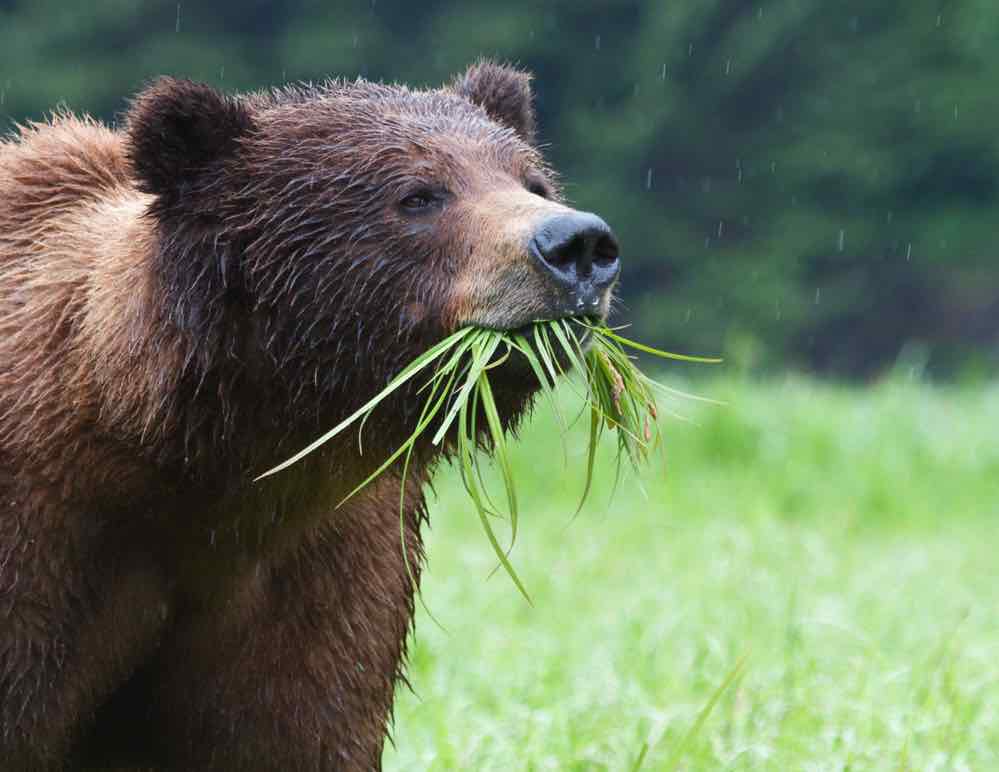
As the largest predator in North America, the grizzly's only dangers are man and larger bears.
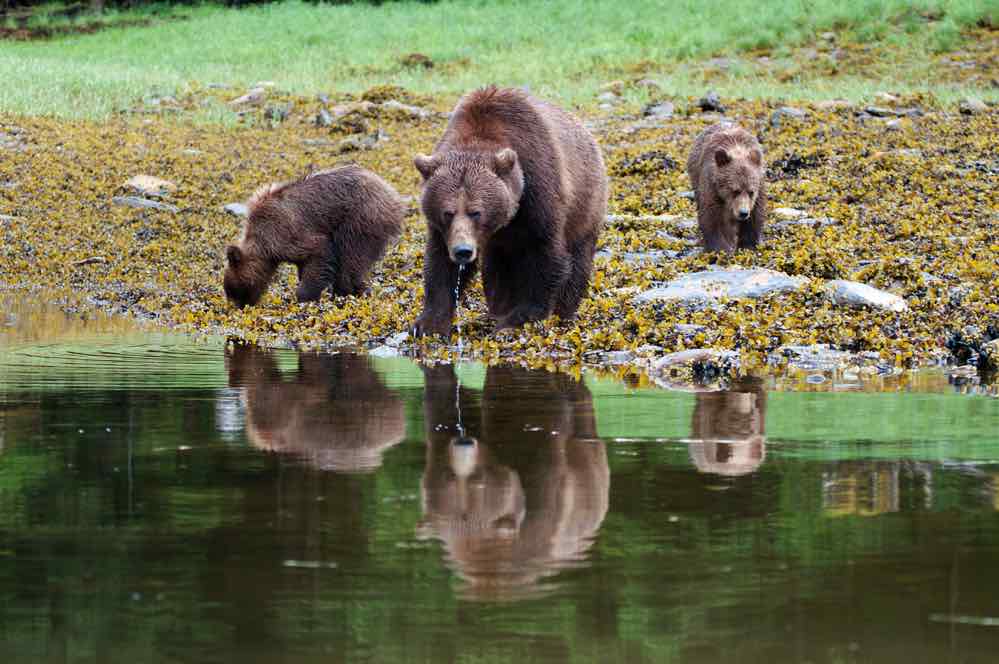
We found this sow with cubs working the tidal beds for mussels, barnacles and clams.
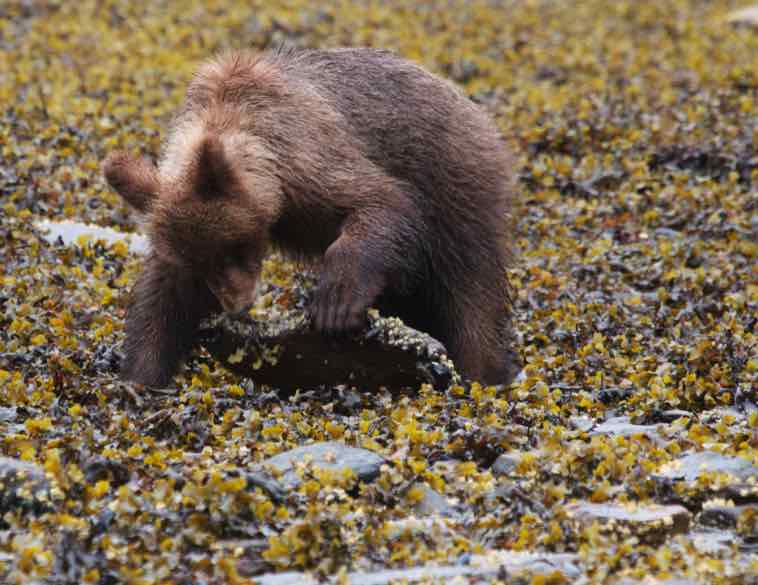
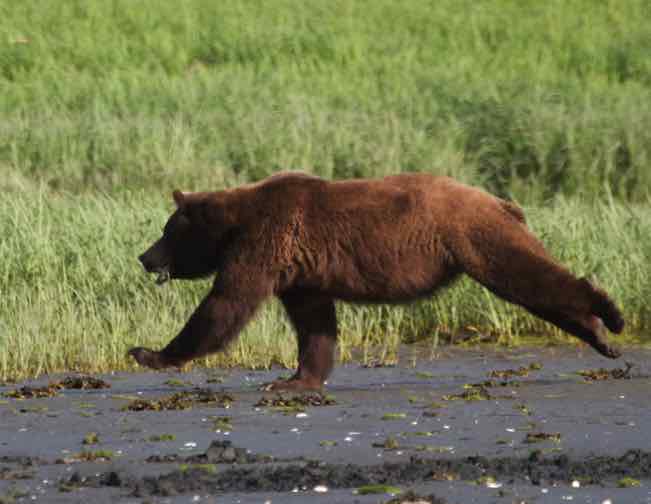

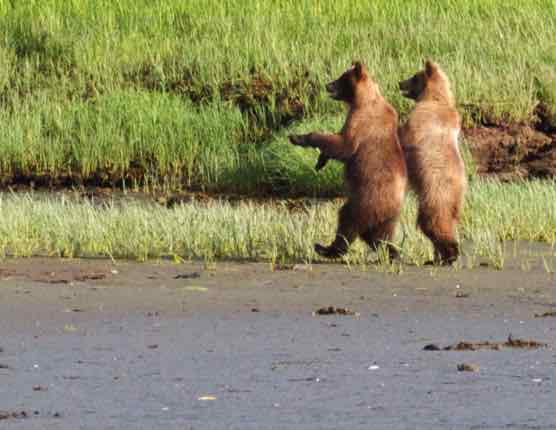
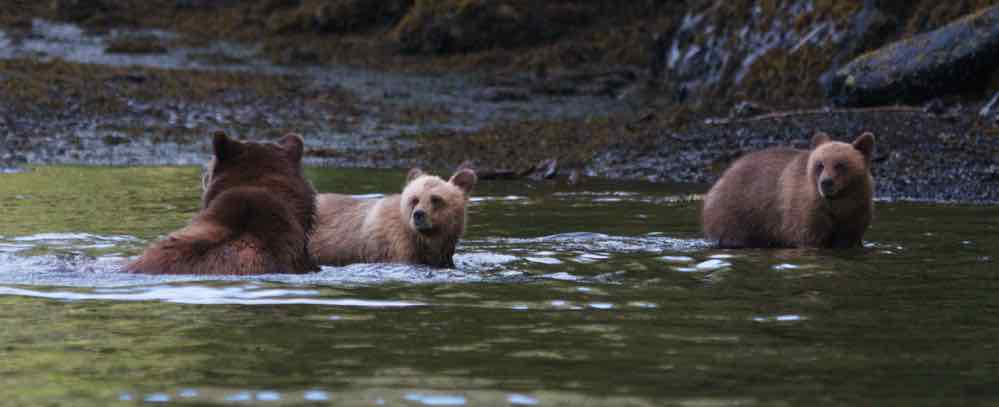
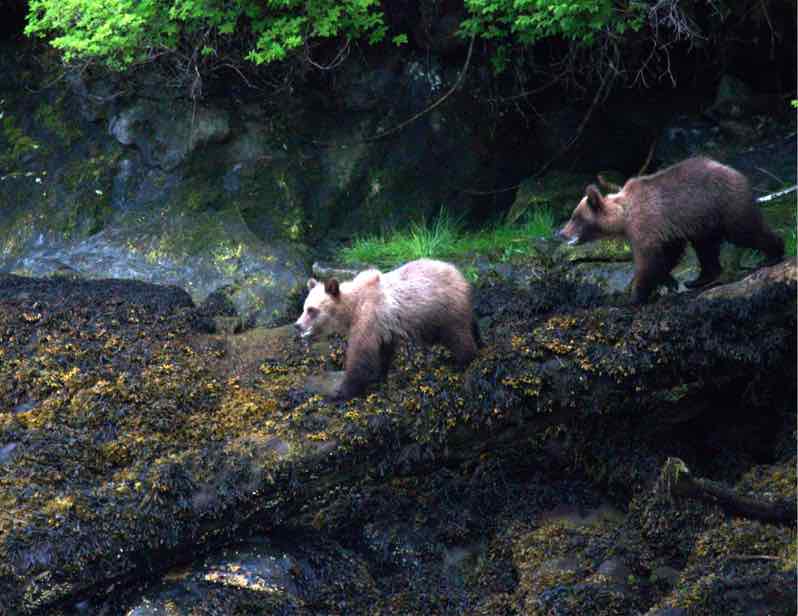
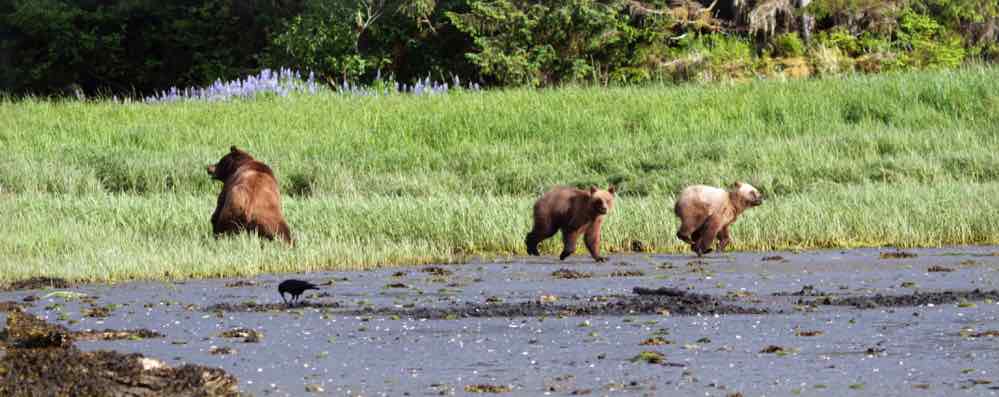
A young male approached from upwind and behind a hill unaware of the sow and cubs
The sow caught the scent of the intruder and sent the cubs to the woods
When she was sure the cubs were clear, she took off toward the threat.
In spite of their mass, the grizzly can run at speed of 35 to 40 mph
The agitated cubs watched their mom closely, the outcome would determine their survival.
The female surprised the male, on the left here, and in a 4 minute fight got the best of him.
The male, here on the right, has a signficant wound on the left side of his face.
She cooled off in the water and the cubs rejoined her from the woods
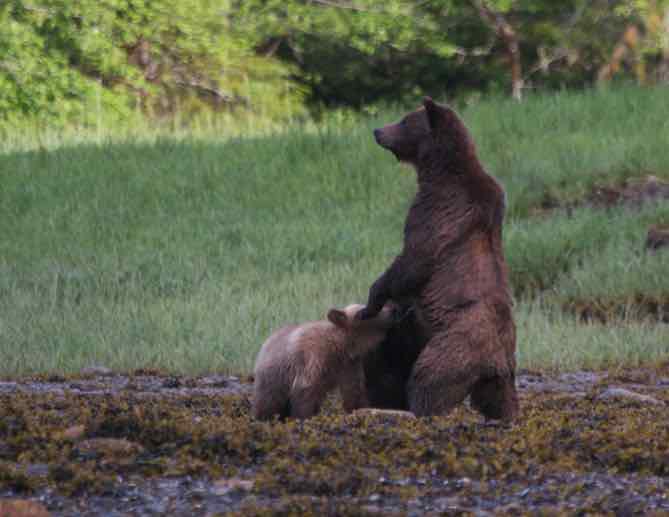
The cubs were eager to nurse, the mom was still wary and alert.
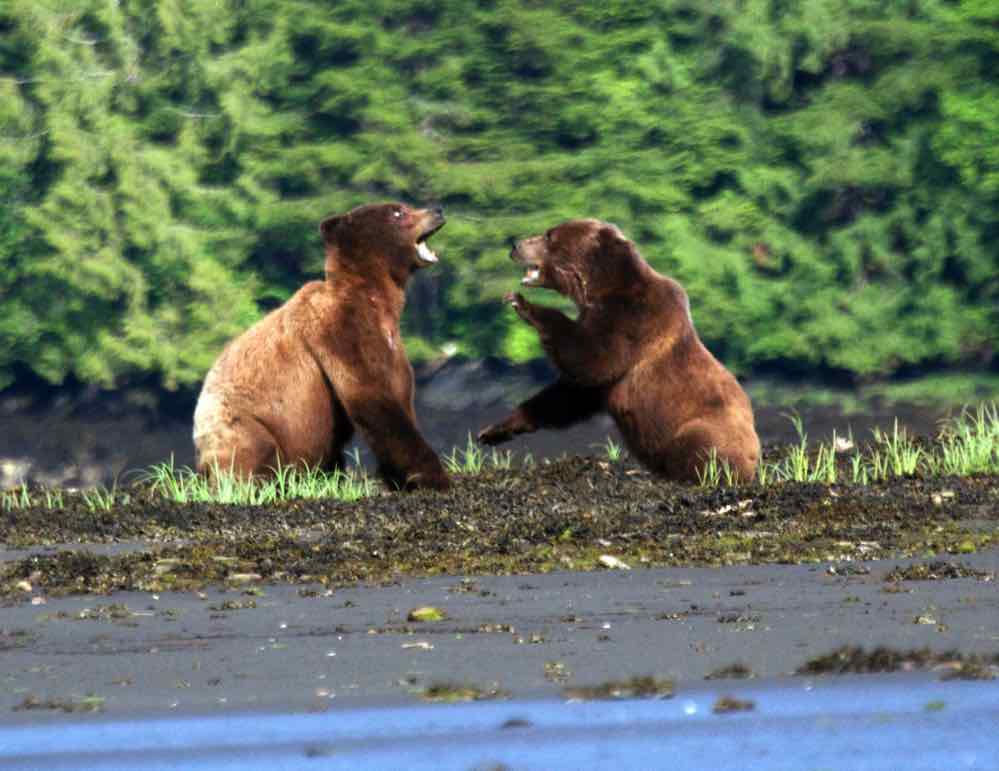

The young male saw the error of his way and became submissive, the female returned to her cubs
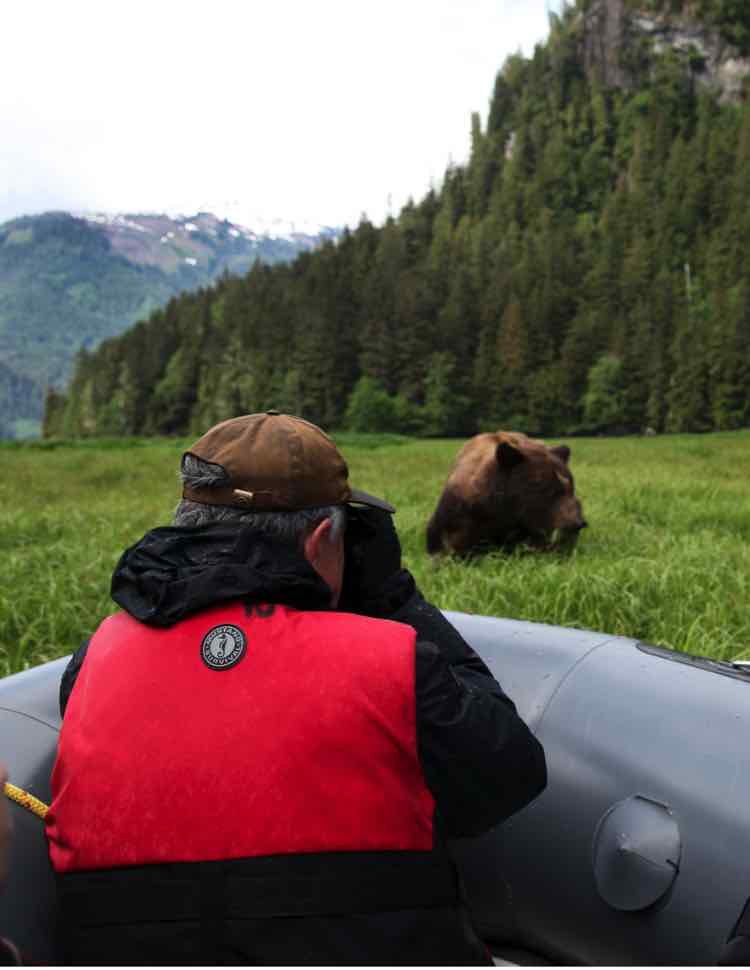
The adult male grizzly is known to kill the cubs to cause the female to esturate
When born, the cubs are blind, toothless, almost hairless, and weigh about a pound
The grizzly bear has one of the lowest reproductive rates of any North American terrestrial mammals. The life span of a grizzly bear is about 25 years.
The cubs would normally stay with the sow for 2 to 3 years during which time she does not breed.
Because of the carefully controlled human contact with the bears over the last 30 years, they take little notice of us.
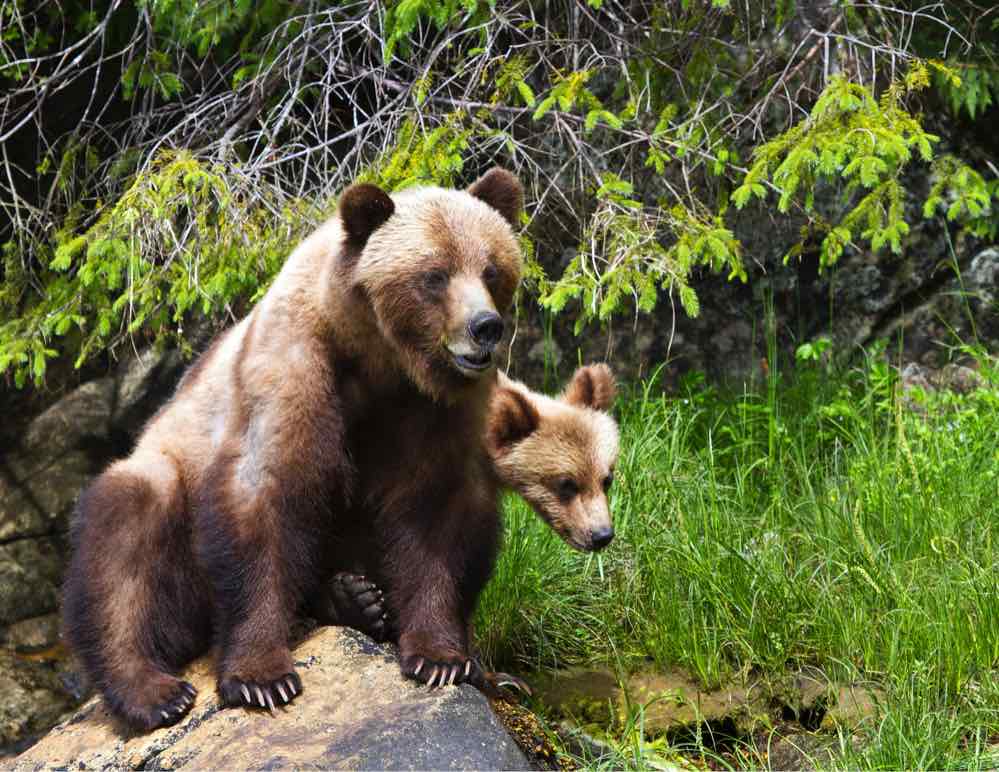
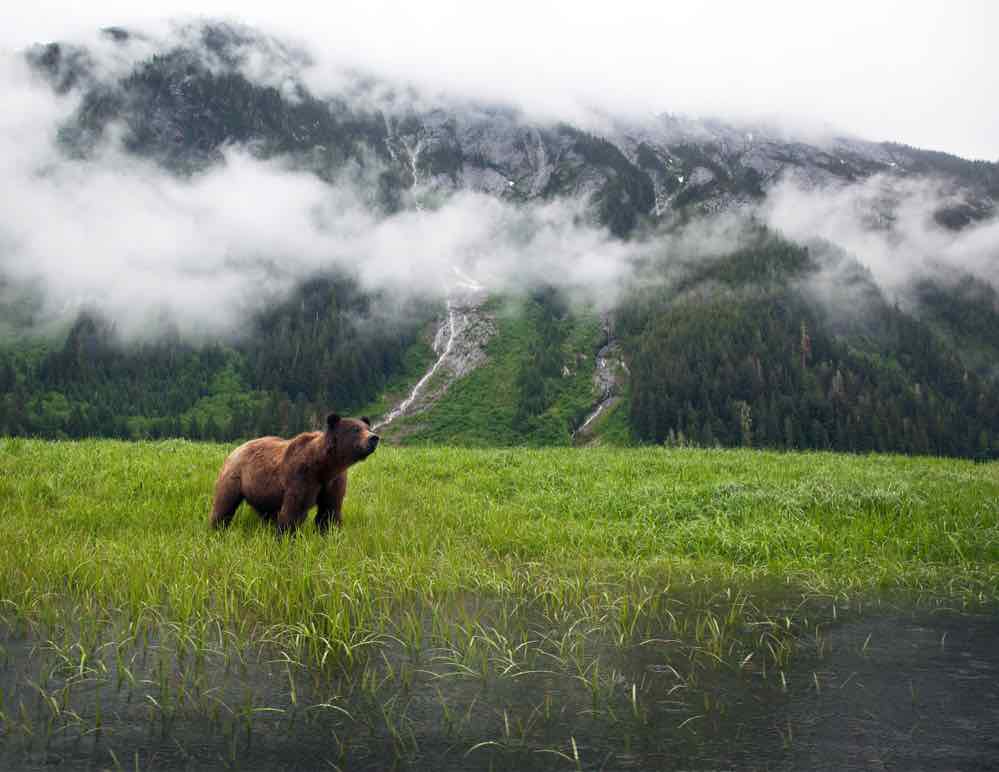
Grizzly bears tend to lead solitary lives except for females with cubs and adults during mating season.
In some areas bears will congregate during salmon spawning season to feed.
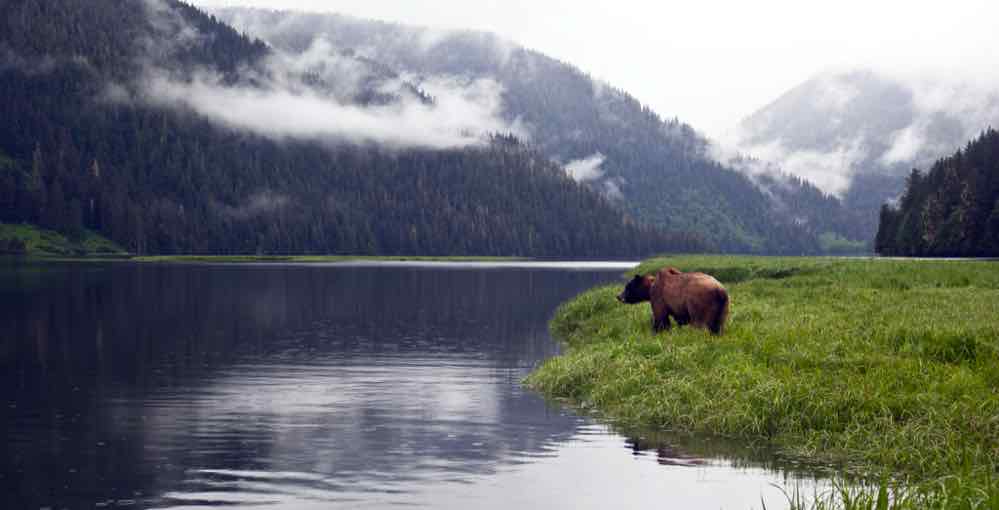
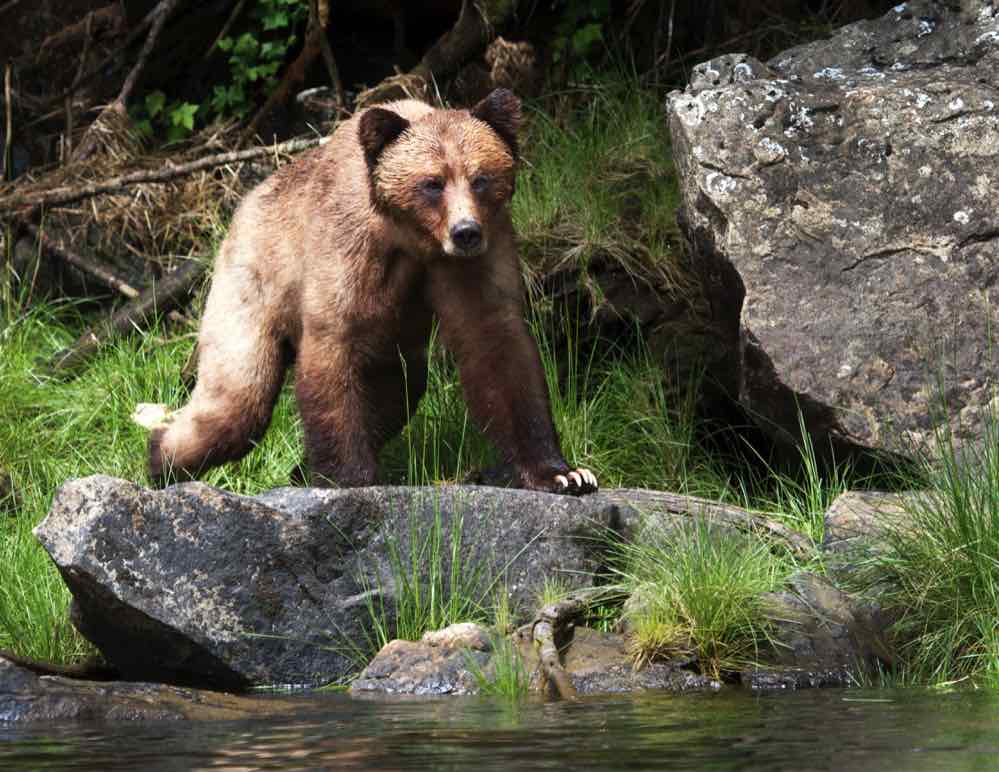
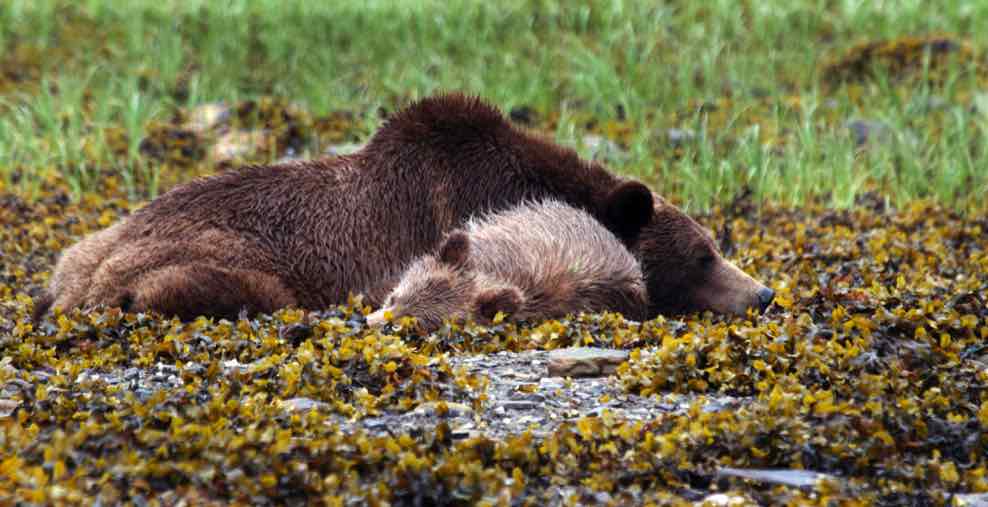
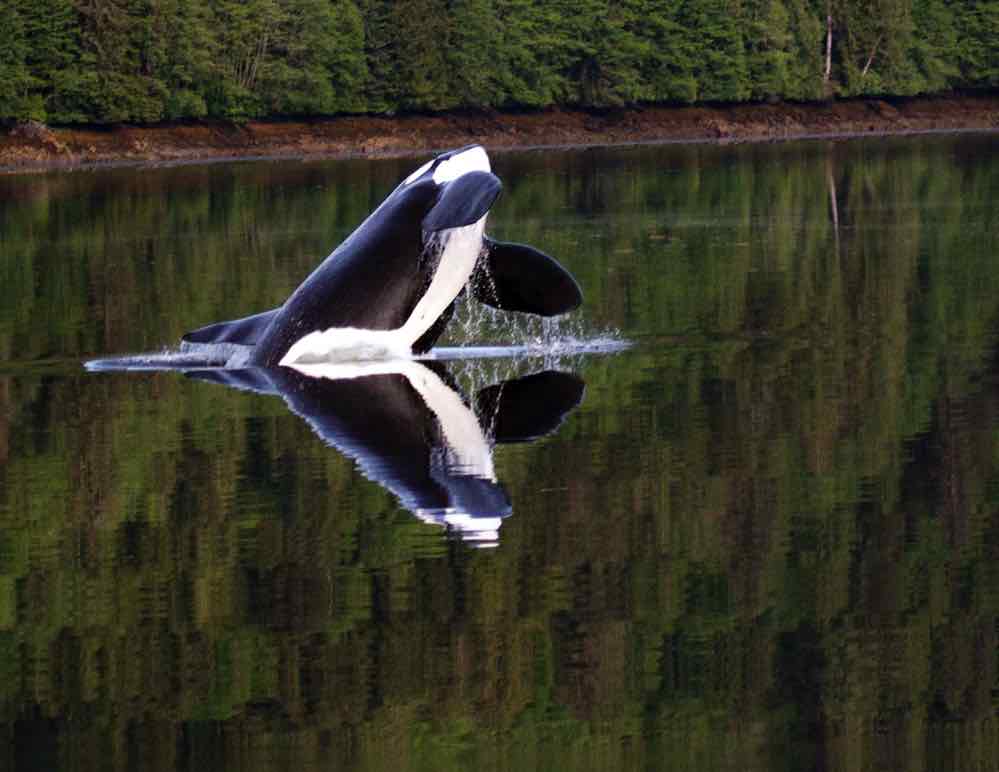
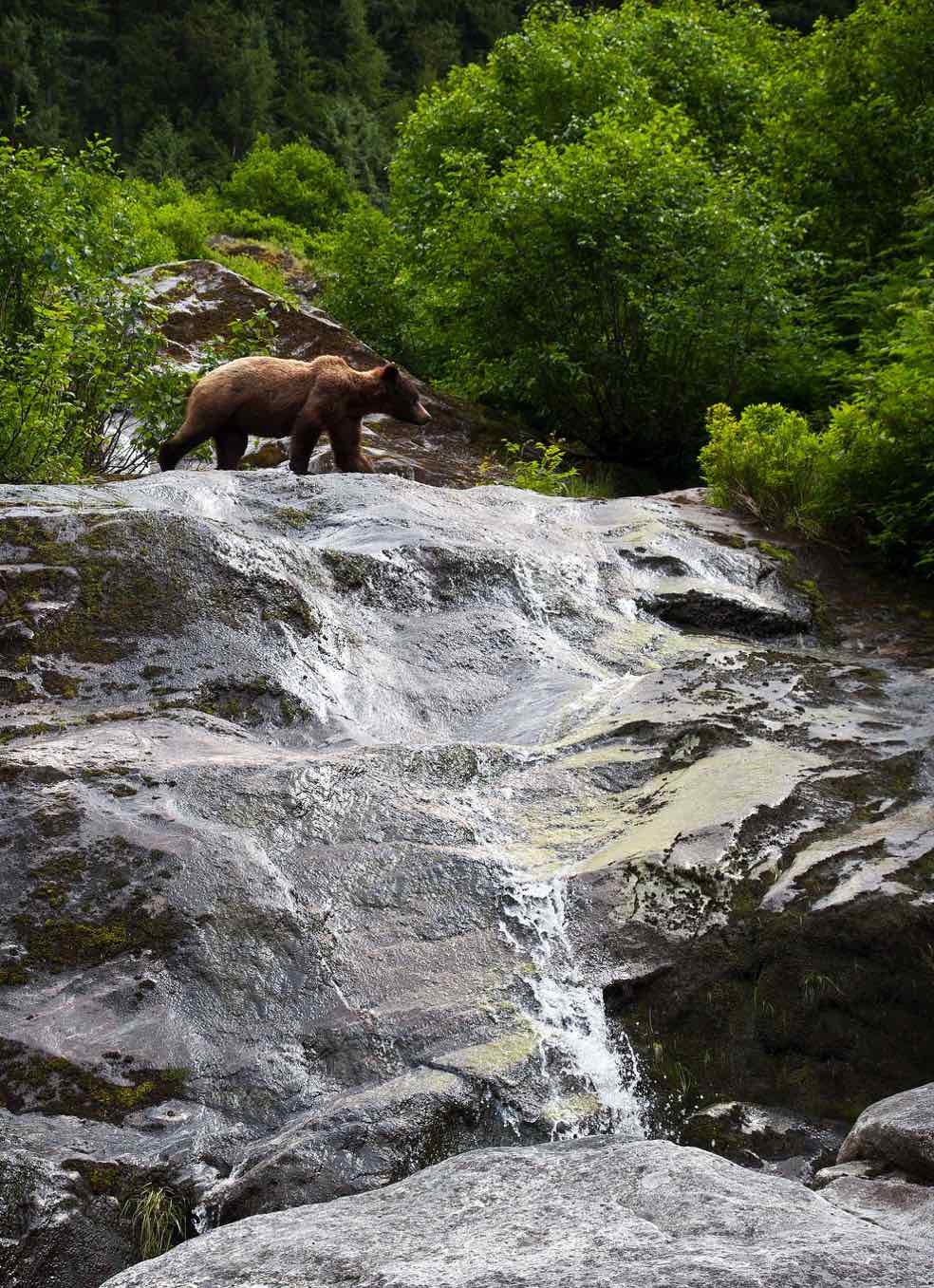
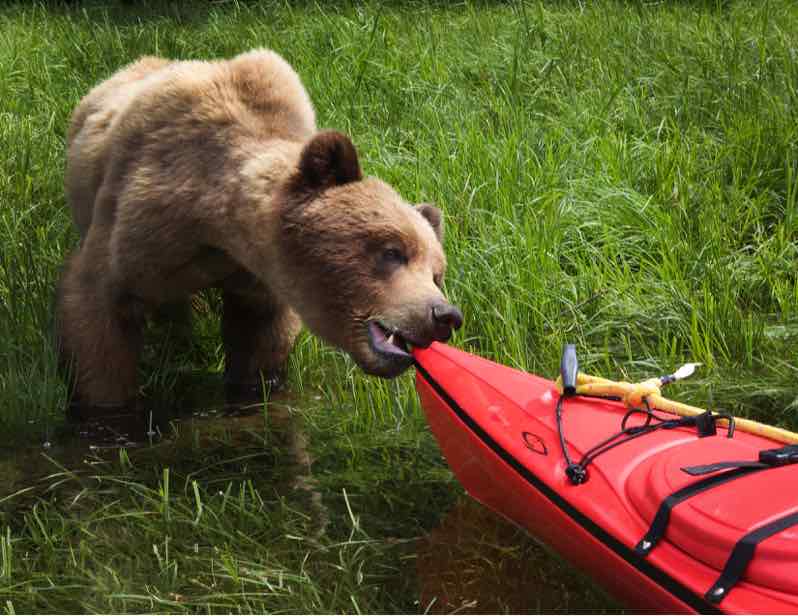
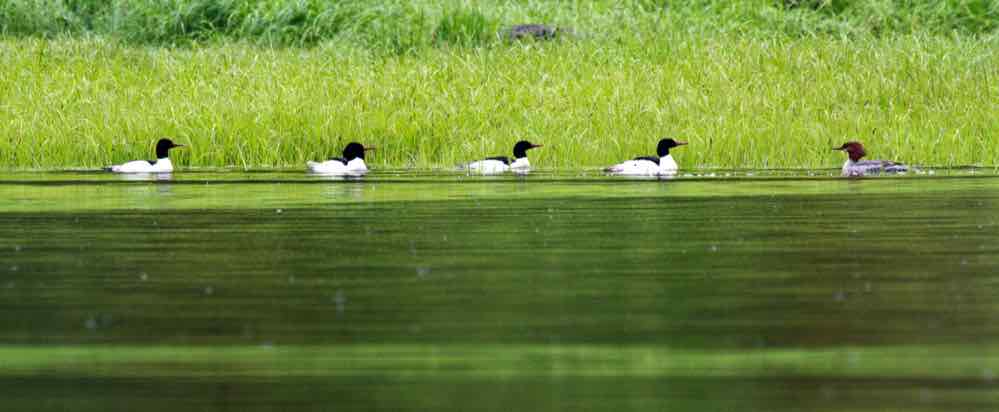
Orcas are rare visitors to the sanctuary. This sighting was the first for Jenn and Tom in 25 years.
Common Mergansers, four males and a female
You have to be careful where you park your kayak.
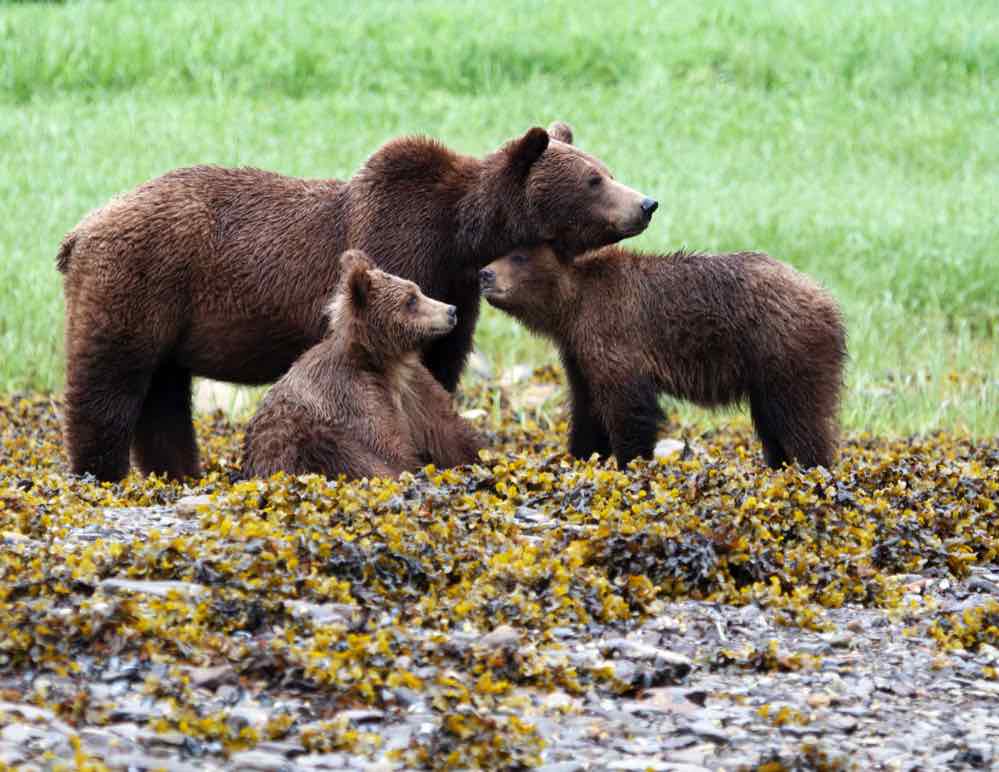
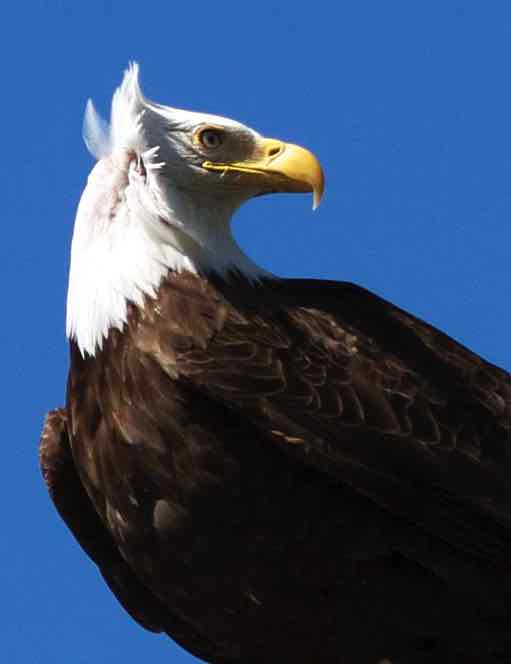
Bald eagles are permanent residents of the Khutzeymateen
Getting closeups
Jenn Broom is the owner of Ocean Light ll Adventures, and Tom Ellison is our guide. Their daughter Sarah, who was born on the boat, is the "crew".
Tom is a master bear guide with 36 years experience in the area.
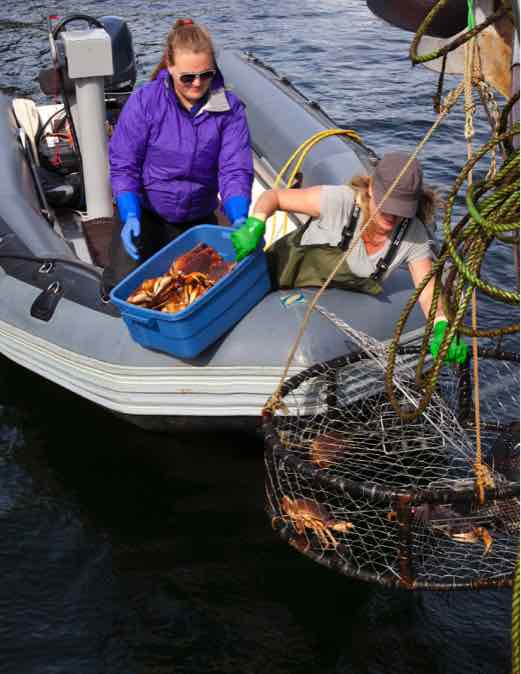
Sarah and Jenn get our dinner out of the crab pots.
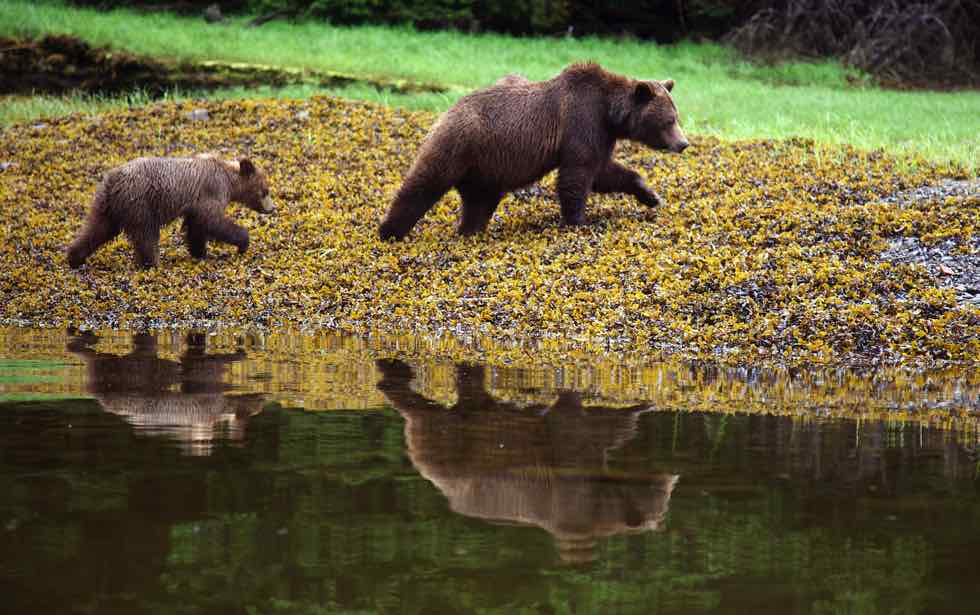
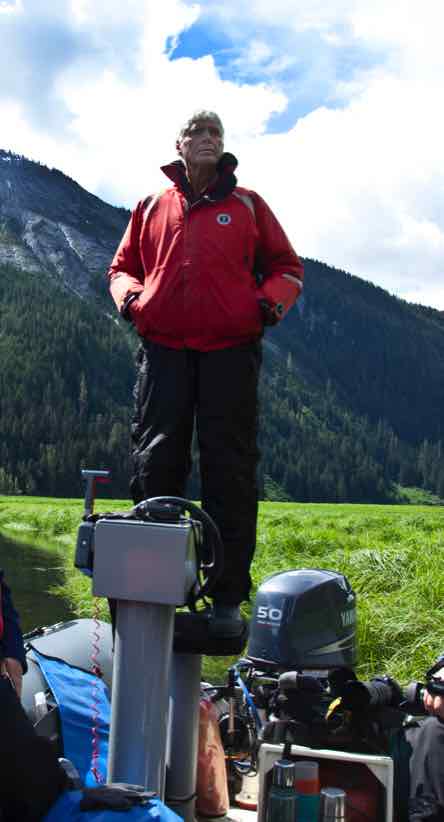
Tom Ellison, our guide, always on the lookout for bears.
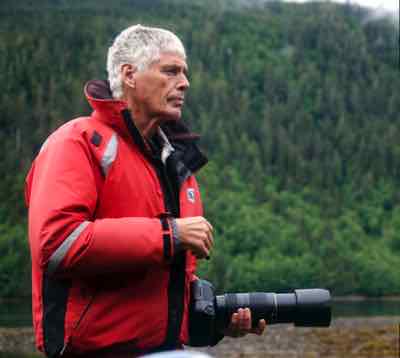
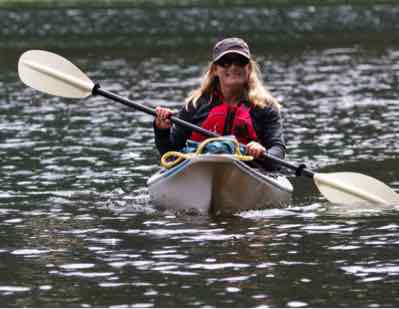
Jenn Broom at work.
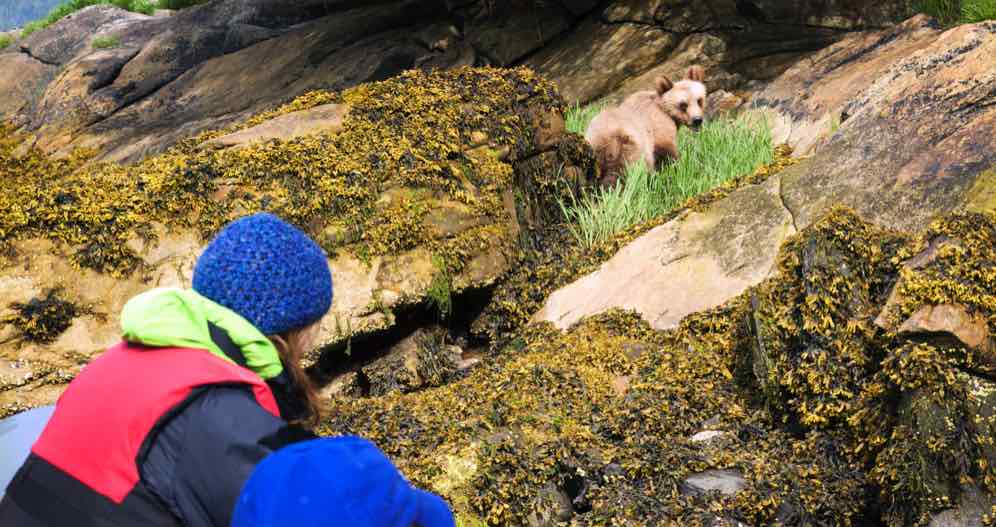
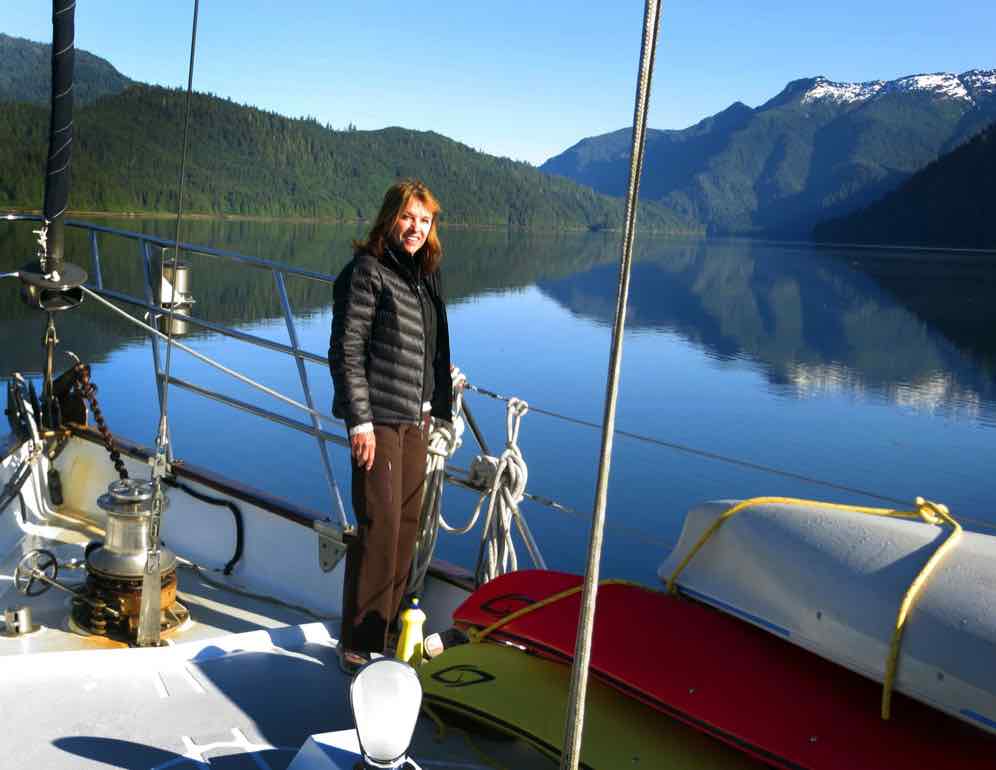
Cheryl checking out a cub and the views.
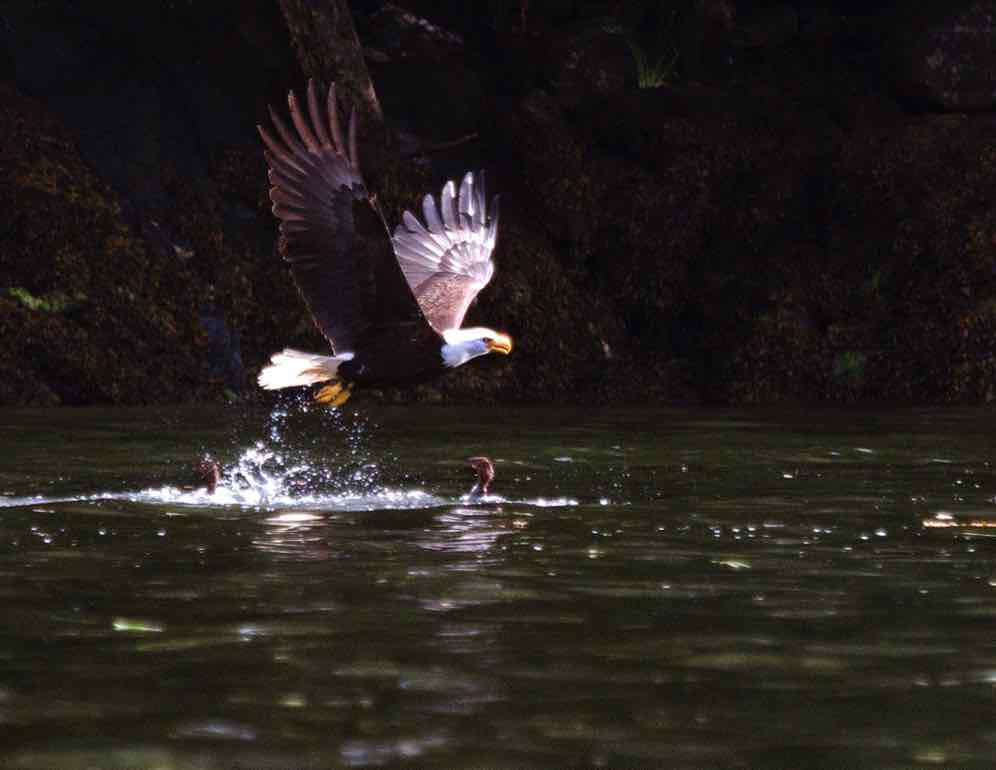
This Bald Eagle made several dives on the Mergansers. Each time the targeted duck dove under, just in time.
Here is a link to a video study of the Bears of the Khutzeymateen:
